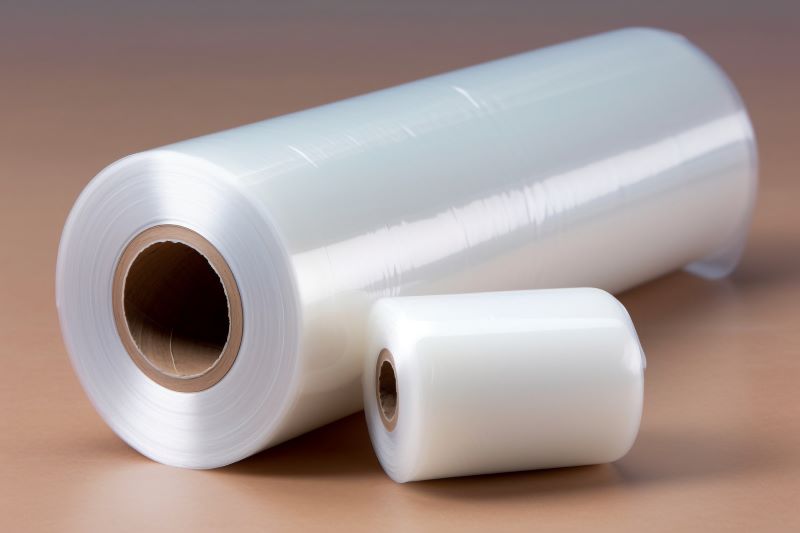Antimicrobial films are a major player in an age where hygiene and cleanliness are paramount. These films offer a barrier that protects against harmful bacteria, molds and other microorganisms. They also improve the quality and safety of different products. This article explores the intricate details of antimicrobial film, including the types, the production process and the methods used to measure its effectiveness.
What is antimicrobial film?
Antimicrobial films can be defined as a material that is treated with antimicrobial agents or coated. These films are intended to prevent the growth of bacteria, fungi and other microorganisms. These films act as a barrier to these external elements and improve the safety and quality of the products that they are used on. These films are widely used and can be found in many industries, including food packaging and medical applications.
Types of antimicrobial films:
The material composition of antimicrobial films allows for classification. Here are some types:
Polyethylene films: Polyethylene, a type of plastic that is durable and flexible, is used to create antimicrobial film.
Polypropylene films: Polypropylene film is a popular antimicrobial material. It is used for food packaging, medical applications and has a high chemical resistance.
Polyvinyl Chloride Films PVC is an extremely versatile plastic. It can be made more flexible and softer by adding plasticizers. It is therefore a good material for antimicrobial film, particularly in the healthcare industry.
Polyester Films : Polyester films have a high level of strength, are dimensionally stable, and resist most chemicals. These films are used to manufacture antimicrobial film for industrial applications.
Polycarbonate films: Polycarbonate has a high temperature resistance and is tough. It’s used to create antimicrobial film for applications that need durability and heat resistance.
Polyurethane Films Polyurethane film is a type polymer known for its resistance to abrasion and tear. It is also resistant to various weather conditions. The hypoallergenic nature of PU films makes them popular in medical applications. They can be treated with antimicrobial agents to provide protection against many microorganisms.
Application antimicrobial film
Antimicrobial films are used in a wide range of applications. The primary purpose of antimicrobial films is to prevent the invasion of unwanted external factors such as harmful bacteria. Here are some key applications.
Food packaging:Antimicrobial film is commonly used to extend the shelf-life of food products. They prevent the growth of harmful bacteria and microorganisms.
Medical Application:These films are used in the medical field for wound dressings and surgical equipment. They can also be found in some medications. They prevent infections and promote faster healing.
Consumer Products:Items like home appliances and electronics devices are often protected against microorganisms by antimicrobial film. Paint Protection Film (PPF) is a thermoplastic polyurethane that is applied to painted surfaces on the front or leading side of vehicles. Antimicrobial PPF is created when PPF has been treated with antimicrobial qualities.
Water treatment:These film can be used to inhibit the growth of bacteria, viruses and other pathogens in water treatment plants.
How to make films antimicrobial?
Antimicrobial films can be made using AntibacMax antimicrobial agent. Two common methods are used. AntibacMax can be mixed directly into the raw material in the film-making process. AntibacMax can also be used to create antimicrobial masterbatches, which are then mixed with the raw materials. The antimicrobial agent is then distributed more evenly across the film. AntibacMax is added to many materials without affecting the transparency of the film or its inherent properties. It’s therefore a viable solution for making antimicrobial films.
How can antimicrobial films be tested?
ISO 22196 is the standard that is used to test the antimicrobial effects of films. ISO 22196, an international standard, measures the antibacterial properties of plastics.
Here is a simplified explanation of the process:
Preparation : A certain number of bacteria cells is prepared.
Innoculation : A bacterial solution prepared is applied to the surface of the film.
Incubation : The inoculated films are sealed and incubated for 24 hours at a certain temperature.
Evaluation After the incubation, the bacteria are removed and the number is counted. Antibacterial activity is measured by the reduction in bacterial populations.
This method is widely used to test the antimicrobial qualities of different types films. The method is designed to be a consistent and clear way to test the antibacterial properties of a film, and to ensure that the results are reliable.
Conclusion
Antimicrobial films are essential in a wide range of industries, including food packaging, medical applications, and more. The development and effectiveness will continue to improve as technology advances. Understanding their composition, testing and production will help us better understand their impact and contribution in our everyday lives.


-300x210.jpg)
